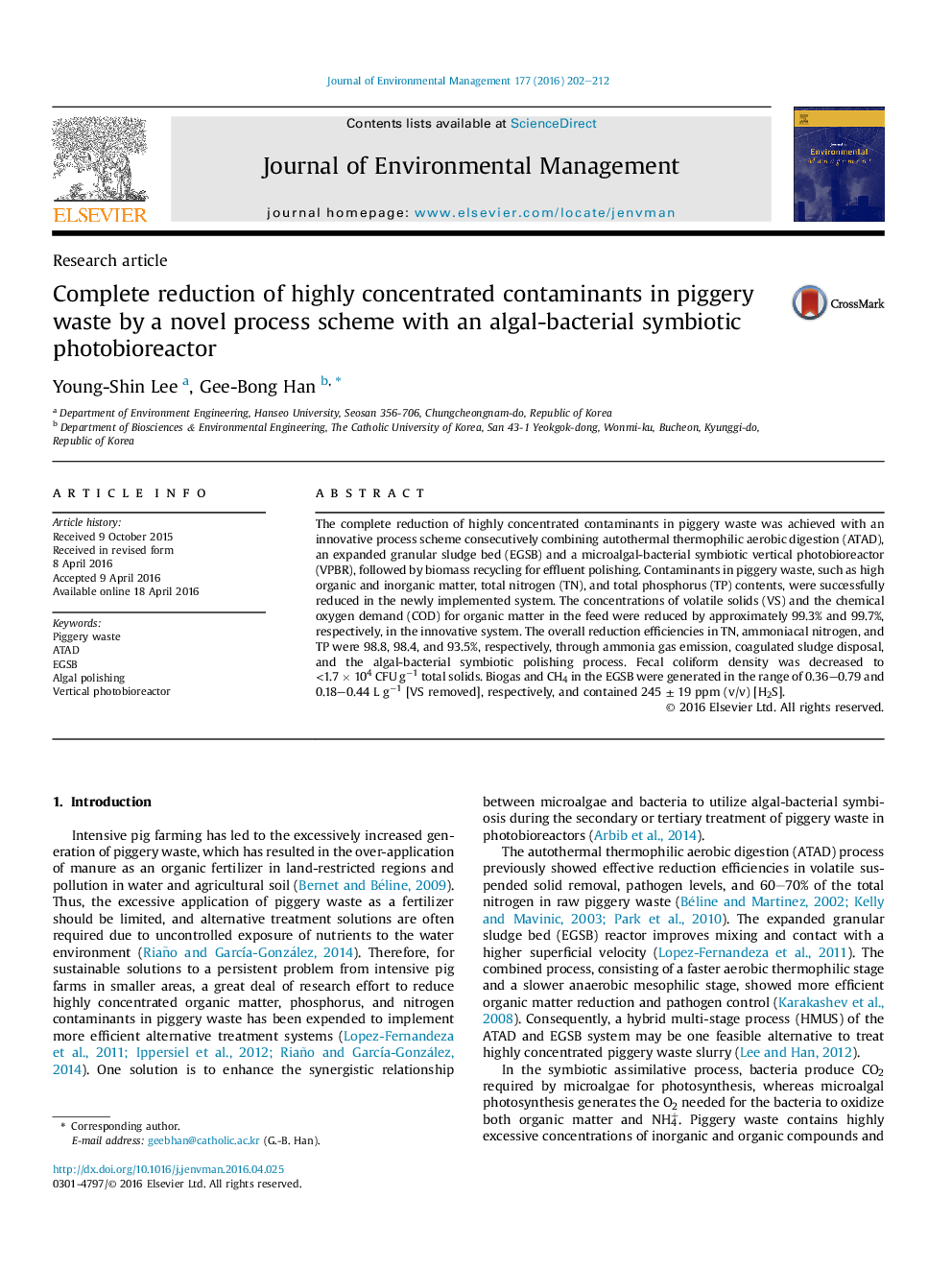| Article ID | Journal | Published Year | Pages | File Type |
|---|---|---|---|---|
| 7480386 | Journal of Environmental Management | 2016 | 11 Pages |
Abstract
The complete reduction of highly concentrated contaminants in piggery waste was achieved with an innovative process scheme consecutively combining autothermal thermophilic aerobic digestion (ATAD), an expanded granular sludge bed (EGSB) and a microalgal-bacterial symbiotic vertical photobioreactor (VPBR), followed by biomass recycling for effluent polishing. Contaminants in piggery waste, such as high organic and inorganic matter, total nitrogen (TN), and total phosphorus (TP) contents, were successfully reduced in the newly implemented system. The concentrations of volatile solids (VS) and the chemical oxygen demand (COD) for organic matter in the feed were reduced by approximately 99.3% and 99.7%, respectively, in the innovative system. The overall reduction efficiencies in TN, ammoniacal nitrogen, and TP were 98.8, 98.4, and 93.5%, respectively, through ammonia gas emission, coagulated sludge disposal, and the algal-bacterial symbiotic polishing process. Fecal coliform density was decreased to <1.7 Ã 104 CFU gâ1 total solids. Biogas and CH4 in the EGSB were generated in the range of 0.36-0.79 and 0.18-0.44 L gâ1 [VS removed], respectively, and contained 245 ± 19 ppm (v/v) [H2S].
Keywords
Related Topics
Physical Sciences and Engineering
Energy
Renewable Energy, Sustainability and the Environment
Authors
Young-Shin Lee, Gee-Bong Han,
